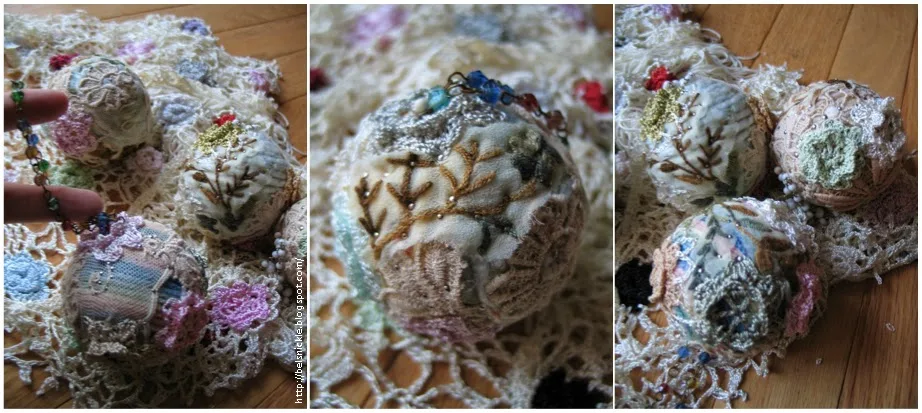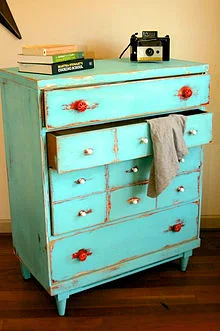 |
| My eldest child stitched this little Colonial sampler when she was a young teenager. This was her first cross-stitch project. I mounted it on heavy cardstock in order to hang the needlework on an Colonial American Christmas tree. |
When my girls were in their preteen years, my husband and I decided it was time to take them on a trip to visit both the
Smithsonian Institute and
Colonial Williamsburg. Although it was not an inexpensive adventure, we felt it to be one of the most educational vacations of their young lives.
During their visit to Williamsburg, my girls were most fascinated with the lives of children, specifically girls, who lived in this recreated historical village. They wanted to know what the girls learned in school, what kinds of chores they were responsible for and what were their hopes and dreams.
 |
| I backed my daughter's cross-stitch sampler with heavy cardstock and a lovely old piece of olive/ochre tapestry. I added braided ribbon and ivory tassels to the ornament as well. Contrary to popular opinions in America, design motifs in the Early American Colonial Era were not always rustic or primitive. In our Colonial Era, designs were sometimes very sophisticated and refined. Age does not always imply "lack" of knowledge or supply. Most of the ornaments that actually hung on the 20th century Williamsburg Christmas trees made by employees during the 1970s were from the pioneer era in America and were far more rustic than those that would have actually been designed by the English and German immigrants of the British colonies. (see 1rst volume of ornaments here) The later published Christmas ornament collection is designed to teach young students about American Folk Artists, some of these lived during the American Colonial times, some of them lived in the 20th century. (see 2nd volumes review here) |
This experience is what influenced my eldest to take up needlework for a brief time during her teen years. I purchased her a small sampler kit to reproduce, hence the ornament that you see at the top of the page.
 |
Plate II.—Sampler by M. C.
16th-17th Century. |
Colonial American samplers by young children often included alphabets, numerals and simple motifs; the letter motifs seem to be preferred by American Colonists in specific during the 1700s. Marcus B. Huish, author and collector writes, "Although a sampler without either alphabets or numerals would seem to be
lacking in the very essence of its being, it is almost certain that the
earliest forms did not contain either, but (like that in Plate II.) were
merely sheets of decorative designs. For the need of pattern-books of
designs would as certainly precede that of copy-books of alphabets and
numerals, as the pleasure of embroidering designs upon garments preceded
that of marking their ownership by names, and their quantity by figures. A
sampler would seldom, if ever, be used as a text-book for children to
learn letters or figures from, except with the needle, and the need for
lettering and figuring upon them would, therefore, as we have said, only
arise when garments or napery became sufficiently common and numerous to
need marking. This period had clearly been reached when our earliest dated
samplers were made, for, out of dated specimens of the seventeenth century
that I have examined, two-thirds carry the alphabet upon them, and the
majority have the
numerals. It is rare to find later samplers without
them, those of the eighteenth century containing assortments of every
variety of lettering, Scottish ones especially laying themselves out for
elaborately designed and florid alphabets. With the advent of the
nineteenth century, however, the sampler began to lose its
raison
d’être, and quite one-half of those then made omit either the alphabet,
or numerals, or both."
Marcus B. Huish
If you would like to make a similar sampler like the one Natalie stitched you can visit the shop at Colonial Williamsburg and order a sampler from their historic collection. These do change from year to year but there is always an assortment of them available.
Learn more about "The oldest surviving samplers were constructed in the 15th and 16th
centuries. Samplers often included the alphabet, figures, motifs,
decorative borders and sometimes the name of the person who embroidered
it and the date. The word sampler is derived from the Latin exemplum -
an example. Expert Joy Jarrett shows us part of her rare collection and explains some of the history behind them."
Additional Sampler Videos:
 |
| Click to download the largest available free sampler patten from my blog. |
Sampler Pictures, History and Patterns Online:

























